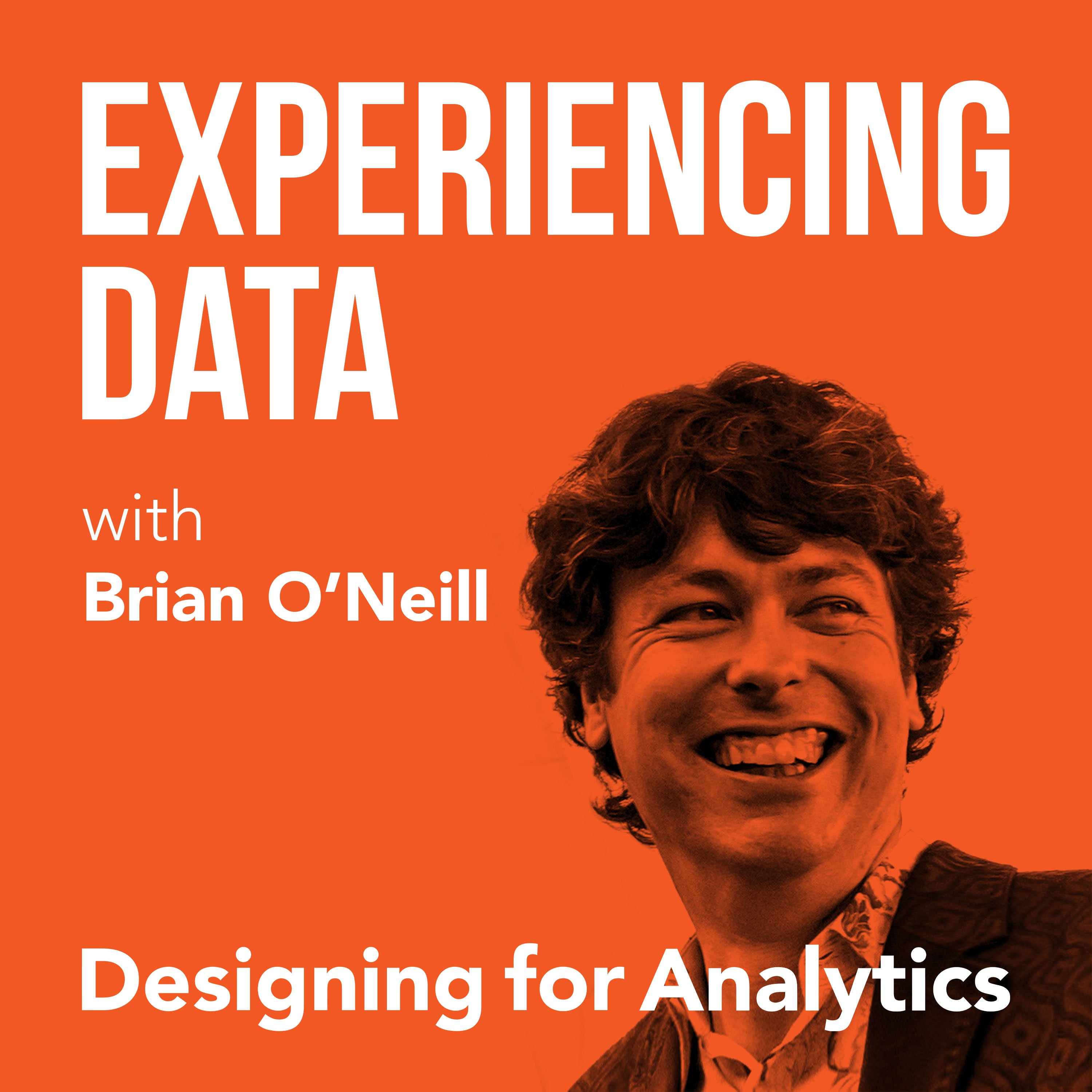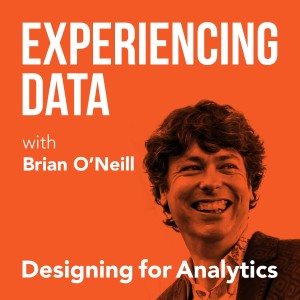

154.8K
Downloads
185
Episodes
Is the value of your enterprise analytics SAAS or AI product not obvious through it’s UI/UX? Got the data and ML models right...but user adoption of your dashboards and UI isn’t what you hoped it would be?
While it is easier than ever to create AI and analytics solutions from a technology perspective, do you find as a founder or product leader that getting users to use and buyers to buy seems harder than it should be?
If you lead an internal enterprise data team, have you heard that a ”data product” approach can help—but you’re concerned it’s all hype?
My name is Brian T. O’Neill, and on Experiencing Data—one of the top 2% of podcasts in the world—I share the stories of leaders who are leveraging product and UX design to make SAAS analytics, AI applications, and internal data products indispensable to their customers. After all, you can’t create business value with data if the humans in the loop can’t or won’t use your solutions.
Every 2 weeks, I release interviews with experts and impressive people I’ve met who are doing interesting work at the intersection of enterprise software product management, UX design, AI and analytics—work that you need to hear about and from whom I hope you can borrow strategies.
I also occasionally record solo episodes on applying UI/UX design strategies to data products—so you and your team can unlock financial value by making your users’ and customers’ lives better.
Hashtag: #ExperiencingData.
JOIN MY INSIGHTS LIST FOR 1-PAGE EPISODE SUMMARIES, TRANSCRIPTS, AND FREE UX STRATEGY TIPS
https://designingforanalytics.com/ed
ABOUT THE HOST, BRIAN T. O’NEILL:
https://designingforanalytics.com/bio/
Episodes

Tuesday Jun 24, 2025
Tuesday Jun 24, 2025
Today on the podcast, I interview AI researcher Tony Zhang about some of his recent findings about the effects that fully automated AI has on user decision-making. Tony shares lessons from his recent research study comparing typical recommendation AIs with a “forward-reasoning” approach that nudges users to contribute their own reasoning with process-oriented support that may lead to better outcomes. We’ll look at his two study examples where they provided an AI-enabled interface for pilots tasked with deciding mid-flight the next-best alternate airport to land at, and another scenario asking investors to rebalance an ETF portfolio. The takeaway, taken right from Tony’s research, is that “going forward, we suggest that process-oriented support can be an effective framework to inform the design of both 'traditional' AI-assisted decision-making tools but also GenAI-based tools for thought.”
Highlights/ Skip to:
- Tony Zhang’s background (0:46)
- Context for the study (4:12)
- Zhang’s metrics for measuring over-reliance on AI (5:06)
- Understanding the differences between the two design options that study participants were given (15:39)
- How AI-enabled hints appeared for pilots in each version of the UI (17:49)
- Using AI to help pilots make good decisions faster (20:15)
- We look at the ETF portfolio rebalancing use case in the study (27:46)
- Strategic and tactical findings that Tony took away from his study (30:47)
- The possibility of commercially viable recommendations based on Tony’s findings (35:40)
- Closing thoughts (39:04)
Quotes from Today’s Episode
- “I wanted to keep the difference between the [recommendation & forward reasoning versions] very minimal to isolate the effect of the recommendation coming in. So, if I showed you screenshots of those two versions, they would look very, very similar. The only difference that you would immediately see is that the recommendation version is showing numbers 1, 2, and 3 for the recommended airports. These [rankings] are not present in the forward-reasoning one [airports are default sorted nearest to furthest]. This actually is a pretty profound difference in terms of the interaction or the decision-making impact that the AI has. There is this normal flight mode and forward reasoning, so that pilots are already immersed in the system and thinking with the system during normal flight. It changes the process that they are going through while they are working with the AI.” Tony (18:50 - 19:42)
- “You would imagine that giving the recommendation makes your decision faster, but actually, the recommendations were not faster than the forward-reasoning one. In the forward-reasoning one, during normal flight, pilots could already prepare and have a good overview of their surroundings, giving them time to adjust to the new situation. Now, in normal flight, they don’t know what might be happening, and then suddenly, a passenger emergency happens. While for the recommendation version, the AI just comes into the situation once you have the emergency, and then you need to do this backward reasoning that we talked about initially.” Tony ( 21:12 - 21:58)
- “Imagine reviewing code written by other people. It’s always hard because you had no idea what was going on when it was written. That was the idea behind the forward reasoning. You need to look at how people are working and how you can insert AI in a way that it seamlessly fits and provides some benefit to you while keeping you in your usual thought process. So, the way that I see it is you need to identify where the key pain points actually are in your current decision-making process and try to address those instead of just trying to solve the task entirely for users.” Tony (25:40 - 26:19)
Links
- LinkedIn: https://www.linkedin.com/in/zelun-tony-zhang/
- Augmenting Human Cognition With Generative AI: Lessons From AI-Assisted Decision-Making: https://arxiv.org/html/2504.03207v1
No comments yet. Be the first to say something!